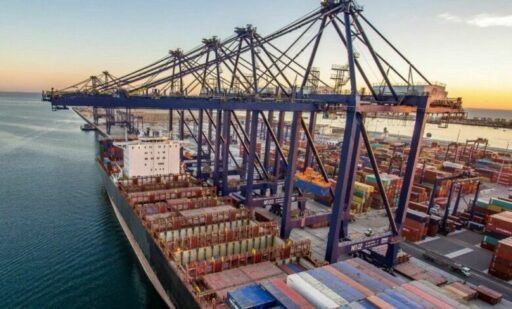
Karachi Port traffic in early 2025 surged due to regional supply chain shifts. Reports show container throughput jumped nearly 18 percent year‑on‑year, highlighting its growing role in South Asia logistics. The Karachi Port cargo performance data confirms this upward trend clearly.
Shipments and Growth Story
Karachi Port Authority reports that container volume topped 2.6 million TEUs by March, compared with 2.2 million TEUs in the same period of 2024. Dry bulk shipments and liquid cargo imports—including steel billets, edible oils, and petrochemicals—also rose. Experts credit India’s trade rerouting after Pakistan’s port disruptions, prompting increased Indian exporters to reroute through Karachi via third countries.
Infrastructure Strain
Despite the volume gains, Karachi Port infrastructure is creaking. Berth occupancy reached 92 percent on peak days. Delays in cargo treatment, customs processing, and congestion led shipping lines to report average turnaround time increasing to 32 hours. Terminal managers cite outdated gantry cranes and limited electronic data interchange systems as bottlenecks. Expansion projects remain delayed due to security clearances and funding issues.
Karachi Port traffic growth vs infrastructure limitations
The rapid increase in trade has outpaced port modernization. Cargo storage yards are reaching capacity limits, prompting urgent calls for new container terminals and dredging of access channels to accommodate larger vessels.
Pakistan exports via Karachi Port expand, but delays remain
Exports of textiles and cement saw notable growth through Karachi Port. However, exporters noted slowdown in customs clearance and poor hinterland connectivity. Rail and road links need expansion to align with rising demand.
Regional Impact & Strategic Position
Karachi Port remains a key hub for Afghanistan, Central Asia, and land‑locked nations bypassing Iranian Gulf ports. Its strategic location links South Asian maritime lanes with inland supply corridors. With India redirecting goods via Dubai and Istanbul, Karachi Port has momentarily captured regional trade, but often as a transit point—raising questions on its competitiveness amid trade sanctions and geopolitical friction.
Public Sentiment and Operational Insight
Local business chambers welcomed the cargo uptick, but warn it could reverse without immediate reforms. Freight operators urge modernization, privatized terminal management, and transparent port tariffs. Community leaders around Karachi Port areas are demanding better environmental controls and improved labor standards.
Expert Observations & Forward Game Plan
Ports analysts suggest Karachi Port must prioritize:
-
Digital transformation: Implementing Port Community Systems for faster document flow.
-
Capacity expansion: Additional container berths and upgraded cranes.
-
Connectivity upgrades: Strengthening road and rail links to hinterland.
-
Regulatory reform: Faster land use approvals and security licensing for development.
Pakistan’s Planning Commission has approved a multi-year port master plan, but implementation appears slow due to bureaucratic red tape. Investors are watching whether public‑private partnerships accelerate this overdue infrastructure catch‑up.
Takeaway for Readers
Retailers, logistics professionals, and policymakers in India should watch Karachi Port development closely. As trade dynamics evolve, supply routes may continue shifting across borders. Understanding the performance and limitations of Karachi Port gives Indian exporters and importers insight into alternate trade channels and risks.
👁 For more trade analysis and port updates, bookmark TheMasalaNews.in.